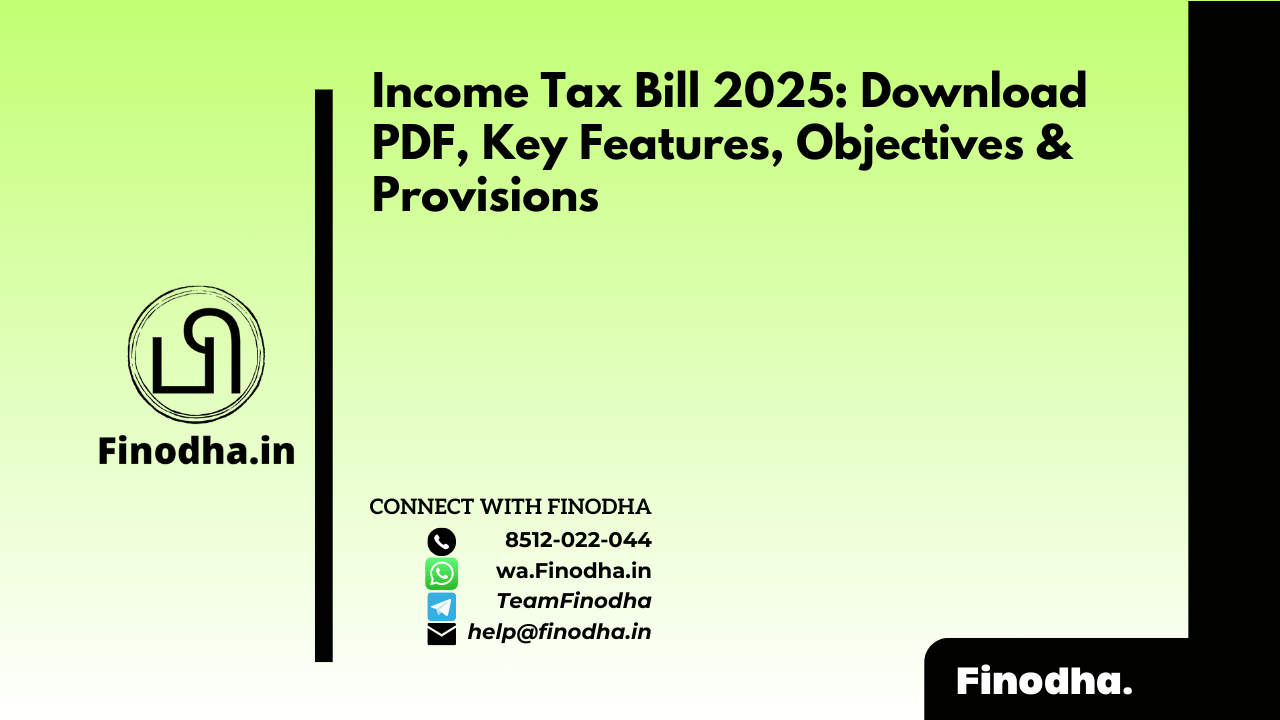Important Keyword: Business and Profession Income, Capital Gains, Income from House Property, Income Source.
Table of Contents
Set Off and Carry Forward Losses
Setting off and carrying forward losses is a vital strategy for individuals and businesses alike when they encounter financial setbacks. This approach allows them to utilize these losses to diminish their tax obligations, thereby turning adversity into opportunity. By leveraging this strategy, taxpayers can navigate challenging financial circumstances more effectively, making it a crucial aspect of income tax planning.
Basics of Carry forward and Set off of losses
Taxpayers have the flexibility to offset losses against their income for the current year. If any losses remain unutilized, they can carry them forward to subsequent years to offset against future income. It’s worth noting that if taxpayers fail to file their Income Tax Return (ITR) within the stipulated deadline under Section 139(1), they forfeit the opportunity to carry forward losses to future years, except for losses under the head “Income from House Property.” However, even if they file a belated ITR, they can still carry forward losses under this category to future years.
Set Off Losses
Intra-Head Set Off of Loss:
Intra-head set-off entails offsetting losses against income within the same category. This means losses from a specific source within a particular category can be adjusted against income from another source within that same category. For instance, if there’s a loss from a self-occupied property but profit from another rented house property, you can use the losses to offset the income from the profitable property.
Inter-Head Set Off of Loss:
Inter-head set-off involves adjusting losses from one income category against profits from another income category. Therefore, if a taxpayer incurs losses in one income category but earns positive income in another, those losses can be offset against the income. For example, you could set off losses from a self-occupied house property against income from salary. However, before applying inter-head set-off, the taxpayer must first utilize intra-head set-off.
Methodology of set-off of losses for each head
Business (PGBP) Loss:
- Non-Speculative Business Loss: Can be set off against any income except salary income.
- Speculative Business Loss: Can be adjusted against only Speculative Business Profit.
Loss under Capital Gains:
- Short-term capital loss: Can be adjusted against short-term and long-term capital gains.
- Long-term capital losses: Can be adjusted against long-term capital gains only.
- Capital gains losses can only be set off against capital gains and not with any other income.
House Property Loss:
- Loss from house property: Can be set off against any other income.
- Set off of losses can be done up to INR 2,00,000 for a particular assessment year.
Loss from trading in Cryptocurrency and other Virtual Digital Assets (VDA):
- Losses from the transfer of cryptocurrency, NFT, or VDA: Cannot be set off against any other income.
- Losses from other heads can be set off against profit on the transfer of cryptocurrency, NFT, or VDA.
Horse-Race Loss:
- Losses from the business of owning and maintaining racehorses: Cannot be set off against any income other than income from the business of owning and maintaining racehorses.
Specified Business Loss:
- Losses from businesses specified under section 35AD: Can be adjusted against income from specified businesses only.
- Losses from other businesses and professions can be set off against specified business losses.
Loss from Gambling or betting:
- Losses from winnings from lotteries, crossword puzzles, horse races, card games, and games having gambling or betting: Cannot be set off against any income.

Example of Set-Off Loss:
Non-Speculative Business Loss: INR 5,00,000 Speculative Business Income: INR 1,00,000 House Property Income: INR 2,50,000
Solution:
Taxpayers can set off Non-Speculative Business Loss in the following order:
- Speculative Business Income (Intra-head set off): INR 1,00,000
- House Property Income (Inter-head set off): INR 2,50,000
- Carry Forward Loss to future years: INR 1,50,000 (5,00,000 – 1,00,000 – 2,50,000)
Carry Forward Losses
Loss remaining after set-off refers to the portion of the loss that taxpayers can carry forward to future years to offset against future incomes. For instance, if there is a loss from self-occupied house property remaining after intra-head and inter-head set-off, the taxpayer can carry it forward for up to 8 years and adjust it against future income from house property.
To carry forward the loss to future years, taxpayers must file the Original Income Tax Return (ITR) within the due date as per Section 139(1). However, even if taxpayers file a Belated ITR under Section 139(4), they can still carry forward loss under the head House Property to future years. Below is a table outlining the rules for carrying forward and setting off losses against future incomes:

Example for Carry Forward of Loss:
FY 2021-22 (AY 2022-23)
- Non-Speculative Business Loss: INR 5,00,000
- Speculative Business Income: INR 1,00,000
- House Property Income: INR 2,50,000
FY 2022-23 (AY 2023-24)
- Speculative Business Income: INR 30,000
- Non-Speculative Business Income: INR 1,40,000
Solution:
FY 2021-22 (AY 2022-23)
- The taxpayer can set off Non-Speculative Business Loss in the following order:
- Speculative Business Income (Intra-head set off) – INR 1,00,000
- House Property Income (Inter-head set off) – INR 2,50,000
- Carry Forward Loss to future years – INR 1,50,000 (5,00,000 – 1,00,000 – 2,50,000)
FY 2022-23 (AY 2023-24)
- The taxpayer can set off Non-Speculative Business Loss in the following order:
- Carry Forward Loss – INR 1,50,000
- Non-Speculative Business Income – INR 1,40,000
- Speculative Business Income – INR 10,000
Carry Forward and Set Off Business Loss
Non-speculative business loss:
Taxpayers can carry forward Non-Speculative Business Loss remaining after set off for up to 8 assessment years. These losses can be set off against incomes under the head ‘Profits and Gains from Business and Profession.’
Speculative business loss:
Losses from speculative business can be carried forward for 4 years. However, these brought-forward losses can only be adjusted against speculative business incomes.
Specified business loss:
There is no time restriction for carrying forward losses from specified business. These brought-forward losses can be adjusted against specified business incomes only.
Owing and maintaining racehorses
The taxpayer can carry forward losses from owning and maintaining racehorses for up to 4 years. However, they can only adjust these losses against the profits earned specifically from owning and maintaining the racehorses.
Carry Forward and Set Off of House Property Loss
The taxpayer has the option to carry forward and set off losses from House Property for a duration of 8 assessment years. Moreover, this carry forward of losses is permissible even if the Income Tax Return (ITR) is filed after the due date specified under section 139(1).
In the subsequent financial years, these carried forward House Property Losses can be set off against any income generated from House Property.
Carry Forward and Set Off of Capital Loss
The taxpayer has the provision to carry forward losses under the head of ‘Capital Gains’ for up to 8 assessment years, provided that they have filed their Income Tax Return (ITR) before the due date as specified under section 139(1).
In the subsequent financial years, the taxpayer can utilize the carried forward Short Term Capital Loss (STCL) to offset both Short Term Capital Gains (STCG) and Long Term Capital Gains (LTCG). However, the carried forward Long Term Capital Loss (LTCL) can only be set off against Long Term Capital Gains (LTCG).
Carry Forward and Set Off of Crypto Loss
As per the amendments introduced in Budget 2022, significant changes have been made to the taxation of cryptocurrency, NFTs, and other virtual digital assets (VDA). One notable change is regarding the treatment of losses incurred from the transfer of these assets.
Under the new provisions, taxpayers are no longer permitted to offset losses from the transfer of one virtual digital asset against profits from the transfer of another VDA or any other form of income. Additionally, the option to carry forward such losses to subsequent years for set-off against future income has been eliminated.
Furthermore, if a taxpayer experiences a loss under any other income head, they are prohibited from using it to offset profits generated from the transfer of virtual digital assets. These changes represent a significant shift in the tax treatment of cryptocurrency and other similar assets, highlighting the evolving regulatory landscape in this space.
Treatment of Loss as per New Tax Regime
With the implementation of Section 115BAC in Budget 2020, several changes were introduced in the treatment of losses under the income tax regime. Here’s a breakdown of the key modifications:
House Property Loss: Under the new tax regime, taxpayers can only set off the current year’s loss from house property against income derived from house property itself. Importantly, they are prohibited from offsetting house property losses against any other form of income. Moreover, if taxpayers opt for the new tax regime, they cannot carry forward house property losses to subsequent years.
Set Off Business and Profession Loss: In the scenario of business income, individuals or Hindu Undivided Families (HUFs) are restricted from setting off brought forward business losses or unabsorbed depreciation. Furthermore, they cannot carry forward these losses or unabsorbed depreciation if they are associated with deductions or exemptions withdrawn under clause (i) of sub-section (2) of section 115BAC.
In essence, under the new tax regime, taxpayers can carry forward short-term and long-term capital losses, as well as derivatives trading losses. However, losses such as house property losses and additional depreciation, which are invalidated under Section 115BAC(2)(i), cannot be set off or carried forward.
This distinction between the treatment of losses in the new and old tax regimes is illustrated in the accompanying image, providing a clearer understanding of the changes introduced.

Read More: Calculation of Trading Turnover
Web Stories: Calculation of Trading Turnover
Official Income Tax Return filing website: https://incometaxindia.gov.in/




